You have landed on the right page if you want to know how to drill through porcelain tile without cracking. If you use the right tools and techniques, the process is effortless. This method also allows you to make a hole-in-glass material, which is amazing.
So, without wasting more time, let’s do this!
How to Drill Through Porcelain Tile Without Cracking
Despite its fragile nature, you can conveniently drill holes in porcelain tiles with these tools and materials. Before we discuss our method, let’s understand a few basic things.
What are Porcelain Tiles?
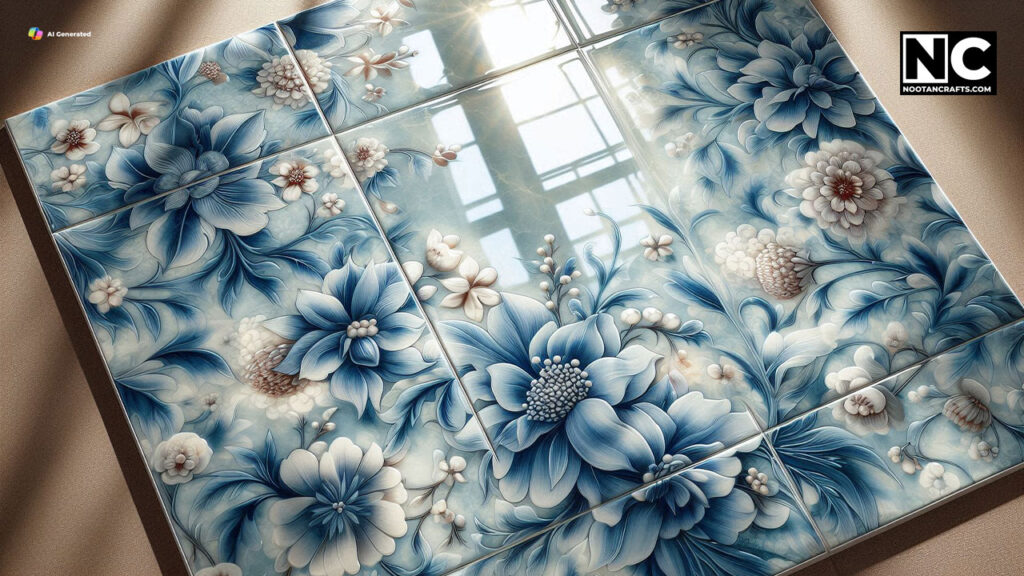
Porcelain tiles are made from refined clay fired at a high temperature. They are highly durable, less porous, and denser, which makes them wear-resistant and moisture/stain-resistant, ideal for heavy traffic and heavy-use areas.
Why Are They Difficult to Drill Through?
The harder and denser nature of porcelain tile makes drilling difficult. If you use regular drill bits, they get overheated and wear out quickly. Moreover, the risk of cracking is high if not done correctly.
Material Needed
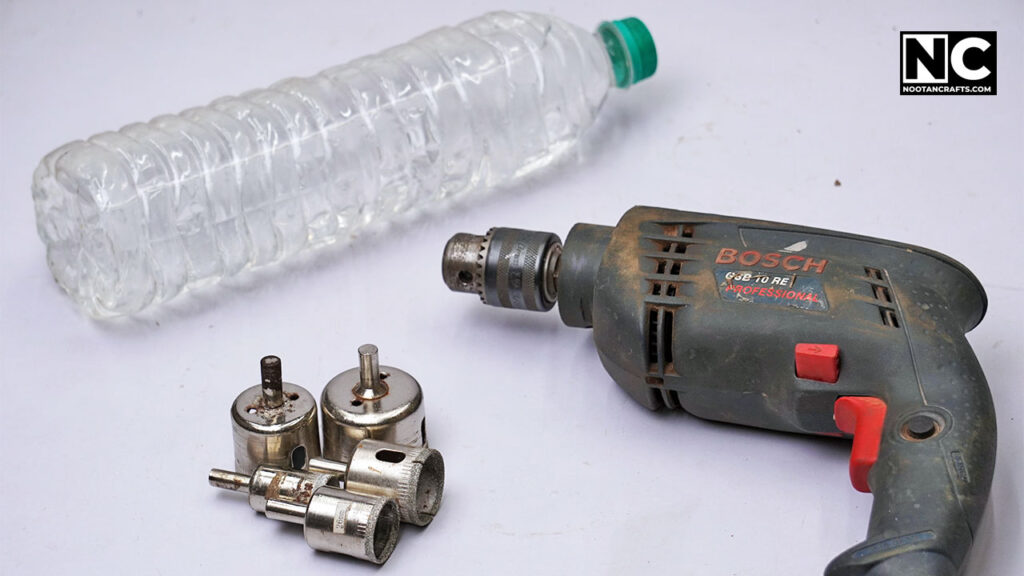
Variable speed drill: A drilling machine with variable speed allows us to start at a low speed, which is essential when drilling in fragile material.
Diamond-Coated Drill Bits: These drill bits are the heart of this project. They work like a wonder and provide exceptional results.

Water Source: We will need water to keep the drill bit cool and avoid wearing out quickly.
A water bottle or Tape: It depends on your requirements. If you’re drilling downward, a water bottle can easily feed the water. On the other hand, if you’re drilling on a vertical wall, you’ll need tape or other methods to keep the bit submerged in water.
Step-by-step Process of Making a Hole in Porcelain Tile Without Cracking
Mark the Drilling Spot
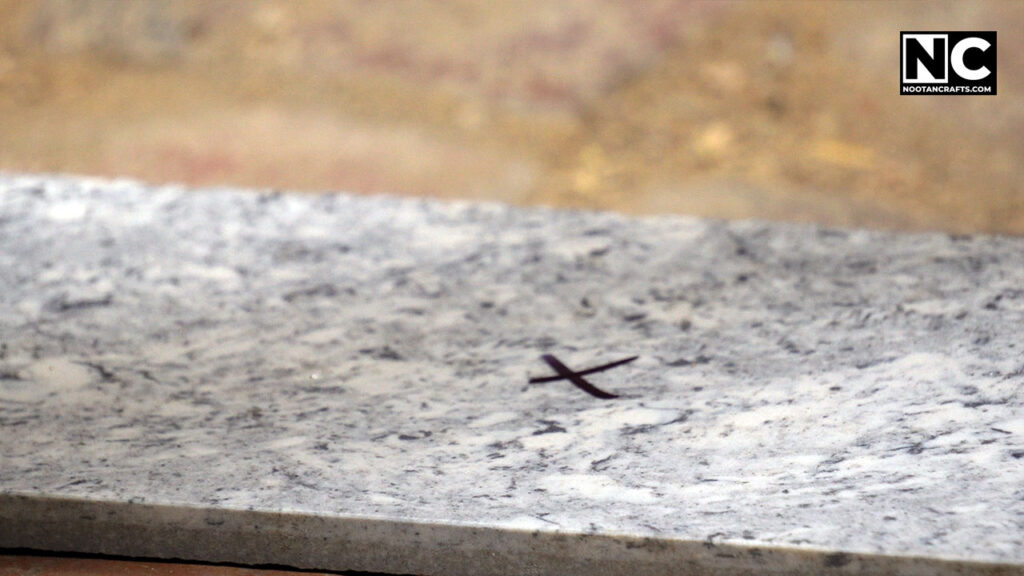
Marking is undoubtedly a crucial step before making any holes. If you create multiple holes, ensure they are perfectly aligned; you can use a water level or laser tool.
Setting Up Water Source
If you’re drilling downward, you can fill a water bottle and make a hole in its lower area to allow water to flow on your drill bit while drilling. If you’re working on a wall, you can use tape to make a reservoir to hold the water. Another method, which is only suitable for larger holes, is to use a sponge soaked with water and place it inside the hollow bit. When you start drilling, the water inside the sponge will keep the bit cool.
The whole idea of dipping the drill bit in the water is to avoid it from overheating and damaging.
Ensure Safety
Please wear safety goggles to protect your eyes from debris and gloves to protect your hands. Make sure the area is well-lit and free of obstructions to avoid accidents.
Drilling Process
Now, it’s time to start drilling the hole.
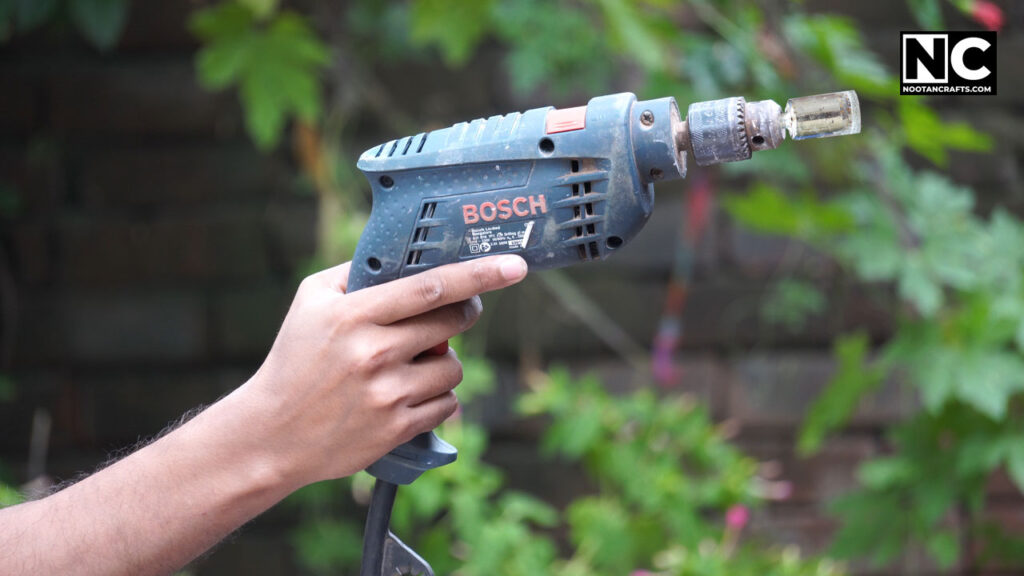
Set up the Drill Bit: First, Insert the diamond-coated drill bit into your drill machine and fasten it securely.
Prepare the Water Source: Fill the tape cavity with water or your bottle if you’re drilling downward. This will keep the drill bit cool and prevent it from overheating.
Start Drilling:
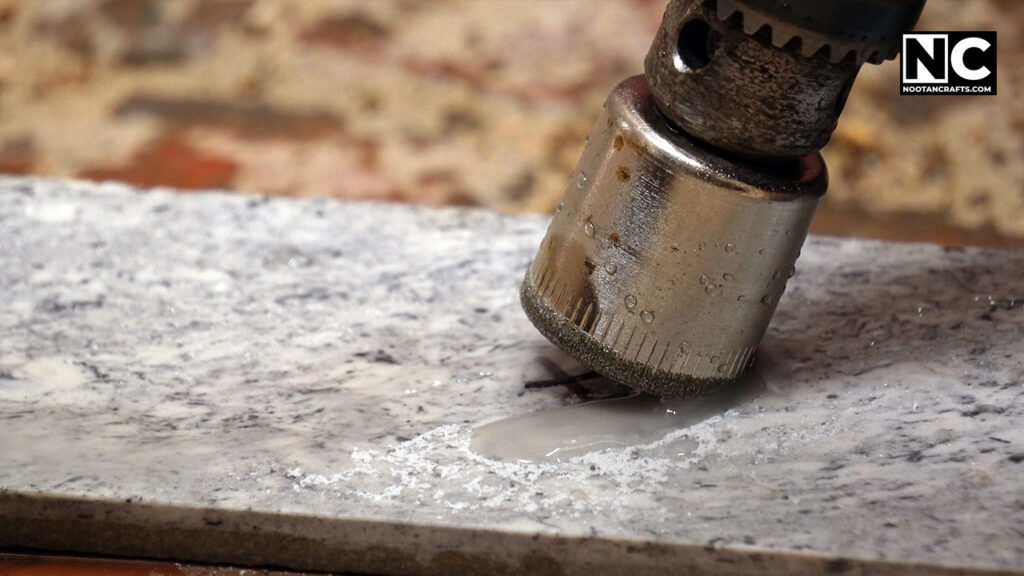
- First, place the drill bit on the marked spot at a slightly tilted position and start the drill at a slow speed. If you put the whole bit perpendicular to the surface, it will start slipping.
- Now, increase the speed after seeing a slight indentation and gradually move the drill perpendicularly to the surface. Don’t apply too much force; let the drill bit do its job. However, ensure the water flows on the bit to keep it cool.

Continuously drill until you go all the way through the tile. If you’re making another hole, wait a little and remove the debris from the bit’s cavity.
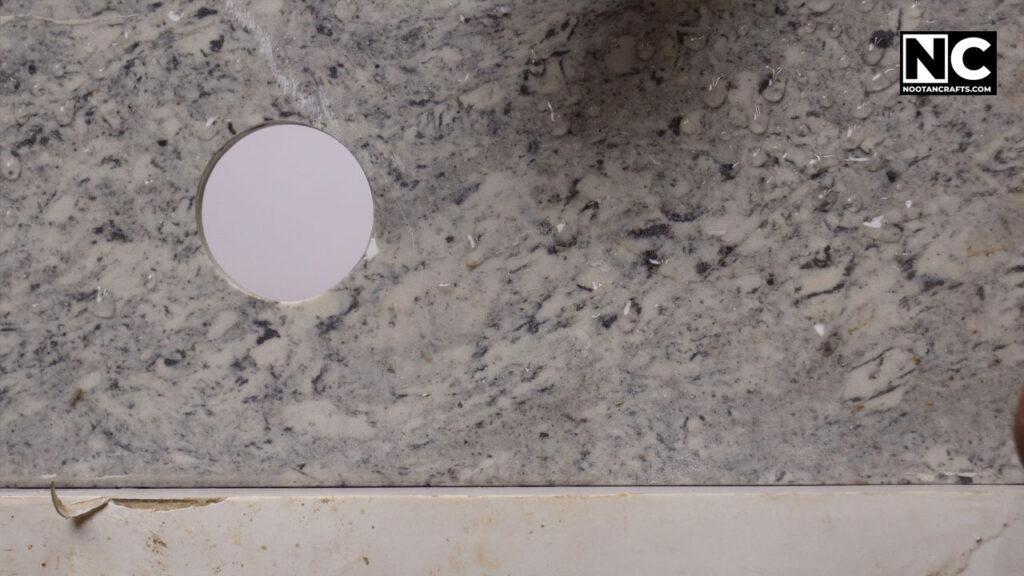
Tips for Maintaining Drill Bit Efficiency
Avoid Overheating: Keep the drill bit cool by ensuring a constant water supply.
Use Steady Pressure: Apply consistent, moderate pressure rather than forcing the drill bit into the tile. It may break the tile.
Check the Drill Bit Regularly: Every drill has a lifespan; replace it as it wears out.
How to Handle Potential Issues During Drilling
Drill bit slips: This is a pretty common issue. To avoid slipping, you should avoid applying any force to the bit at the start. This means you’re almost hovering the drill bit above the tile and gradually making contact by keeping a tight grip on the machine.
If the Tile Cracks: Stop immediately and assess the damage. You may need to replace the tile.
Finally, clean the hole and remove debris to install the fixtures or anchors smoothly.
FAQs
No, regular drill bits will overheat and wear out quickly, and they will break the tile.
Use the tape trick to create a water cavity around the drilling spot, or simply use a bottle filled with water and make a hole at its lower side to create a continuous water-flowing system.
Stop immediately and assess the damage; ensure you use the right tools.
If drilling multiple holes, use a level to ensure they are perfectly aligned. This will help maintain the aesthetic and functional integrity of your installation.
This method can be used for other hard tiles, such as natural stone and ceramic tiles. However, for the best results, always use the appropriate tools and methods.
Conclusion
Drilling through porcelain tile doesn’t have to be a nerve-wracking experience. You can achieve clean, crack-free holes in your tiles by using the right tools, techniques, and a bit of preparation. Remember to keep your drill bit cool with the water, apply steady pressure, and be patient. I am confident that if you follow all the steps, you won’t face any issues and will perfectly make a hole in the porcelain tile without cracking it.

